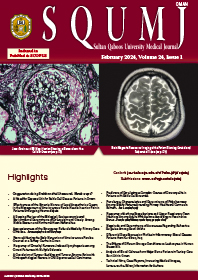Main Article Content
Abstract
Objectives: Despite the numerous advances in management strategies, treating osteomyelitis in individuals with sickle cell disease (SCD) remains a significant challenge, leading to severe long-term consequences. This study aimed to assess the key factors potentially linked to a complex progression of osteomyelitis in patients diagnosed with SCD. Methods: A cohort of 34 patients was identified and their progress was monitored over a span of 12 months during a 10-year period (2010–2020). The variables under investigation encompassed demographic and clinical traits, laboratory analyses and imaging data, as well as the treatment strategies employed. Results: The risk prediction model pinpointed 5 factors (severity of SCD, involvement of lower limbs, presence of bacteraemia, magnetic resonance image [MRI] findings and utilisation of surgical debridement) that exhibited an area under the curve (AUC) exceeding 0.7. Causative organisms were identified in 9 out of the total 34 patients (26.47%). A total of 17 patients displayed a severe course of SCD (AUC = 7.88), with MRI being highlighted as a valuable contributing factor (AUC = 7.88). Furthermore, 13 patients (38.2%) underwent surgical debridement, a procedure that yielded a statistically significant P value of 0.012 and an AUC of 0.714. Conclusion: Osteomyelitis within the context of severe SCD, particularly when accompanied by lower extremity infection, bacteraemia, positive MRI findings and the need for surgical debridement, emerges as a cluster of risk factors predisposing individuals to osteomyelitis relapse and a more complex disease course.
Keywords: Anemia, sickle cell; Bacteremia; Debridement; Disease Severity; Osteomyelitis.
Article Details

This work is licensed under a Creative Commons Attribution-NoDerivatives 4.0 International License.
